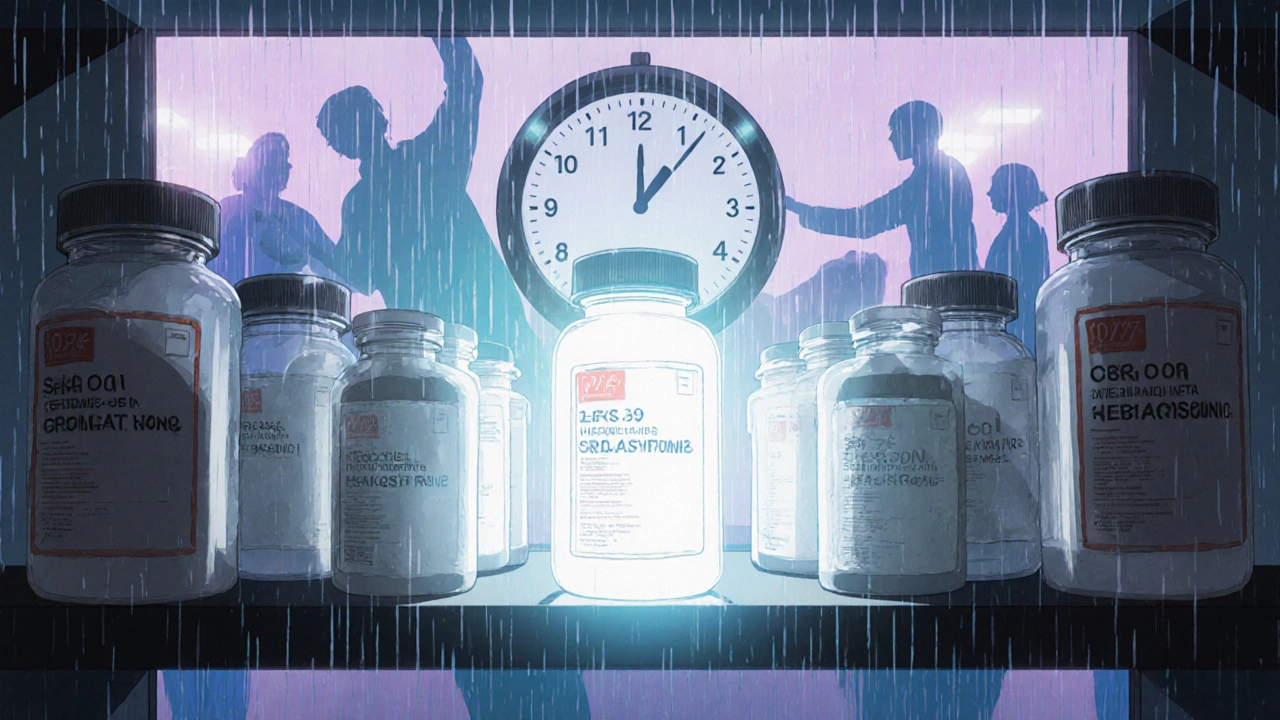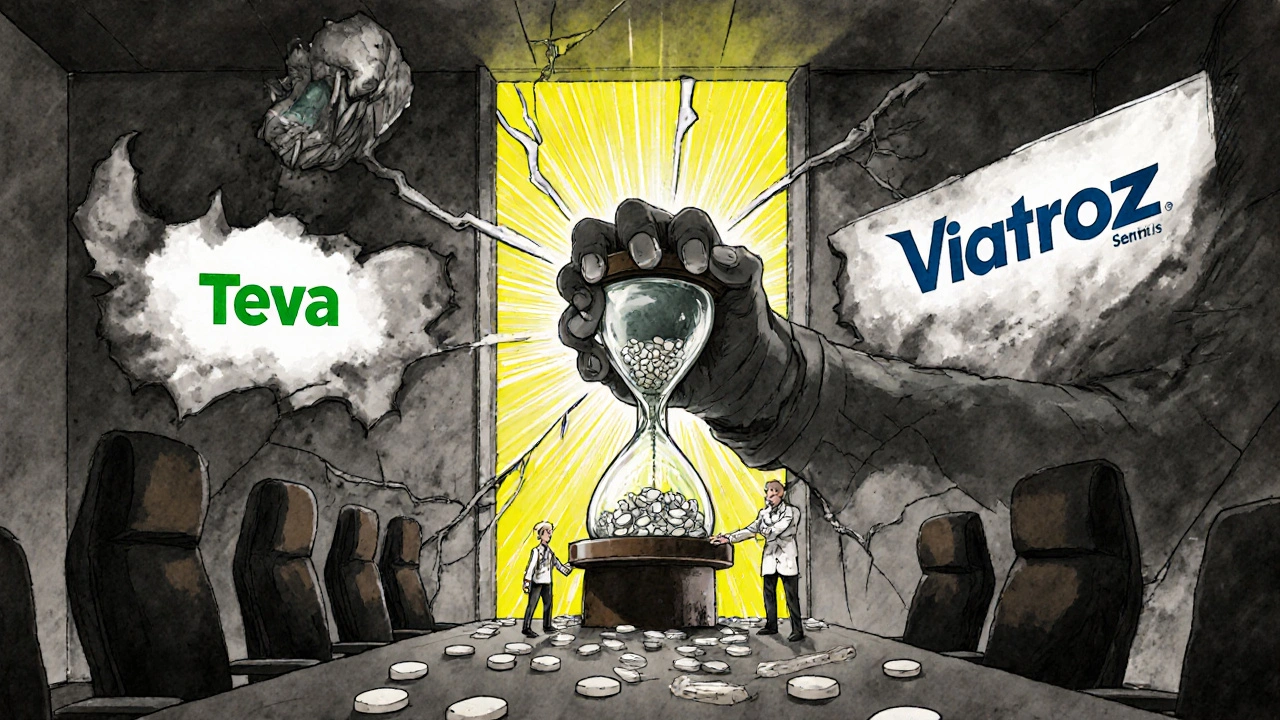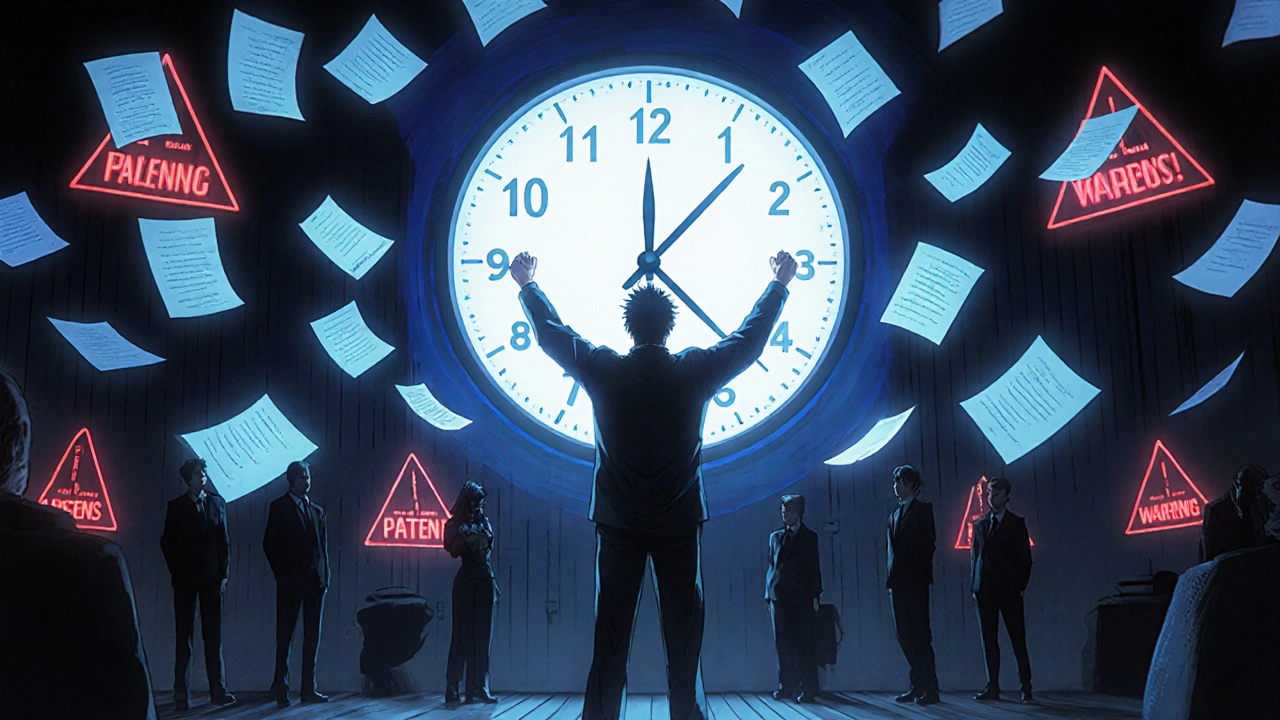The FDA's 180-day exclusivity isn’t just a bureaucratic rule-it’s a financial lifeline for generic drug makers and a key reason why millions of Americans pay less for prescriptions today. When a brand-name drug’s patent expires, the first generic company to successfully challenge that patent gets a 180-day window where no other generic can enter the market. That’s not a favor. It’s a reward for taking a huge risk.
Why This Rule Exists
Back in 1984, Congress passed the Hatch-Waxman Act to fix a broken system. Brand-name drug companies had long monopolies, and generics couldn’t get approved without repeating expensive clinical trials. The law let generic makers file an Abbreviated New Drug Application (ANDA), proving their product was the same as the brand-but with one twist: they could challenge patents upfront. If they won, they got 180 days of exclusive sales. The goal? Speed up competition and lower prices. And it worked. Today, 90% of prescriptions in the U.S. are filled with generics, even though they make up only 23% of total drug spending.How the 180-Day Clock Starts
The clock doesn’t start when the FDA approves the generic. It starts when the company actually starts selling it-or when a court rules the brand’s patent is invalid, unenforceable, or not infringed. That’s a big deal. Some companies get approval but sit on it, waiting for the right moment to launch. In fact, the FDA has seen cases where the 180-day clock runs for years while patent lawsuits drag on. That’s not what the law intended.Who Gets It-and Who Loses It
If two or more companies file their ANDA on the same day with a patent challenge, they all qualify as “first applicants.” They split the 180 days. But here’s where things get messy: forfeiture. Under the Medicare Modernization Act of 2003, if the first applicant doesn’t start selling within 75 days of getting a Notice of Commercial Marketing (NOCM), or doesn’t get tentative approval within 30 months of filing, they lose their exclusivity. About 35% of first applicants forfeit their rights, often because they’re waiting for legal outcomes or negotiating deals with the brand company. Take apixaban, the blood thinner. Six companies filed on the same day. Only three launched within the window. The other three lost their shot. That’s not rare. Legal experts say the average time from patent challenge to first sale is 42 months. That’s over three and a half years. And in 22% of cases, the exclusivity clock starts after a court decision-sometimes while appeals are still pending. That creates chaos for other manufacturers trying to plan their entry.
The Big Problem: Delayed Entry
The system was meant to push generics to market fast. But in practice, it’s been gamed. Both brand and generic companies have found ways to stretch the clock. Some generic makers get exclusivity but delay launch to keep the brand drug priced high. The Federal Trade Commission found 147 cases between 2015 and 2020 where this happened. In one case, a generic company received exclusivity in 2018 but didn’t launch until 2020-two full years later. Patients paid millions in extra costs. Harvard’s Dr. Aaron Kesselheim testified in 2022 that this kind of delay costs U.S. patients $13 billion a year. The FTC says the exclusivity rule was supposed to be a sprint. Instead, it’s become a strategic pause button.Who Benefits the Most?
It’s not small companies. It’s the big players. Between 2018 and 2023, the top five generic manufacturers-Teva, Viatris, Sandoz, Amneal, and Hikma-got 58% of all 180-day exclusivity periods. These companies have the legal teams, the cash, and the patience to fight multi-year patent battles. Small manufacturers? Only 63% say this exclusivity is their main reason for taking on a patent challenge. Without it, many wouldn’t risk it.
What’s Changing?
The FDA is trying to fix it. In 2022, they proposed a new model based on the Competitive Generic Therapy (CGT) system created in 2017. Under this change, the 180-day clock would start only when the first generic is actually sold. No more waiting. No more games. The clock runs for exactly 180 days, then everyone else can jump in. The Congressional Budget Office estimates this would cut drug prices faster, saving $5.3 billion a year. It would also push more generics to market-projected to go from 750-800 per year to 900-950 by 2027. But the big generic makers are worried. They say this removes the incentive to challenge patents. Why spend millions on a lawsuit if you don’t get a long runway to profit?What This Means for Patients
Right now, when a generic launches under exclusivity, it’s priced at 15-20% of the brand’s cost. Once other generics enter, prices drop to 9-12%. That’s a huge swing. If the 180-day exclusivity rule stays as-is, patients will keep seeing delays. If the FDA’s new model passes, they’ll get cheaper drugs sooner-but fewer companies might be willing to fight the patent battles in the first place. The truth? The system works-but only if everyone plays fair. Right now, too many aren’t. The FDA has the data. The FTC has the reports. Congress has the bills. The question is: who will act before another $13 billion vanishes into corporate loopholes?What’s Next for Generic Drugs?
The 180-day exclusivity rule has helped bring over 14,000 generic drugs to market since 1984. But the rules were written for a different time. Today’s patent strategies, legal delays, and corporate consolidation weren’t imagined in 1984. The FDA’s proposed shift to the CGT model could be the reset the system needs. It’s not perfect-but it’s a step toward making exclusivity mean what it says: 180 days of real competition, not 180 days of waiting.What is the FDA's 180-day exclusivity for generic drugs?
It’s a market incentive given to the first generic drug manufacturer that successfully challenges a brand-name drug’s patent by filing an Abbreviated New Drug Application (ANDA) with a Paragraph IV certification. During this 180-day period, the FDA cannot approve any other generic versions of the same drug, giving the first applicant exclusive rights to sell their version without competition.
How does a generic company qualify for 180-day exclusivity?
To qualify, a generic company must be the first to file an ANDA that includes a Paragraph IV certification, which states that the brand’s patent is invalid, unenforceable, or won’t be infringed. If multiple companies file on the same day, they all share the exclusivity. The clock starts when the company begins selling the drug or when a court rules in their favor on the patent challenge.
Can a company lose its 180-day exclusivity?
Yes. Under the Medicare Modernization Act of 2003, a company forfeits exclusivity if it doesn’t begin commercial marketing within 75 days of receiving a Notice of Commercial Marketing (NOCM), or if it fails to get tentative approval within 30 months of filing its ANDA. About 35% of first applicants lose their exclusivity this way.
Why do some generic companies delay launching their drug?
Some delay launch to extend the effective period of exclusivity while patent appeals are ongoing. Others negotiate deals with the brand-name company to avoid litigation or wait for market conditions to improve. The FDA has documented cases where exclusivity was granted but the drug wasn’t sold for over a year, blocking competitors and keeping prices high.
Is the FDA planning to change the 180-day exclusivity rule?
Yes. In 2022, the FDA proposed adopting the Competitive Generic Therapy (CGT) model, which would make the 180-day clock start only when the first generic is actually sold. This would prevent companies from gaming the system by delaying launch. If passed, this change could save consumers $5.3 billion annually and speed up generic competition.

9 Comments
man i had no idea this whole 180-day thing was such a mess. i just take my pills and assume they’re cheap because ‘generic’-turns out some company’s sitting on it for two years while i pay extra. crazy.
so true!! 😔 in india we get cheap meds fast but here in us it’s like a game of chess with big pharma. why do they need 180 days to make money? just let everyone in and drop prices already!!
they’re not just gaming the system… they’re working with the FDA. i’ve seen the documents. this isn’t about patents-it’s about bribes and backroom deals. the FDA’s ‘proposal’? a distraction. they’re all in on it. you think they’d fix this if it hurt their paychecks? lol.
small guys can’t afford lawsuits. big pharma knows that. that’s why only 5 companies get 58% of the exclusivity. it’s not about innovation-it’s about who has the deepest pockets. time to level the playing field.
ok but let’s be real-this whole system is a joke. you have a company that files a patent challenge, then waits 42 months to launch? that’s not competition, that’s extortion. and the FDA’s new rule? it’s not a fix-it’s a bandage on a gunshot wound. someone needs to burn this whole thing down and start over.
i just hope this change happens soon. my mom’s on apixaban and the price jumped 30% last year because the generic didn’t launch. i don’t understand why it’s so hard to just… let people sell the medicine.
i read the FTC report. 147 cases of delay between 2015-2020? that’s not an accident. that’s a business model. and the fact that 35% of companies lose exclusivity just because they’re slow? it’s like the system is designed to fail the little guys.
you people are being way too nice. this isn’t a ‘system glitch’-it’s corporate theft. the 180-day rule was never meant to be a pause button. it was meant to be a sprint. now it’s a vacation. and patients are paying for their spa day. someone needs to go to jail for this.
the FDA’s proposal sounds good on paper but you know what’s gonna happen? the big guys will just find another loophole. they always do. we need real transparency-not another ‘proposal’ that dies in committee. just publish every deal, every delay, every negotiation. let the public see the rot.
Write a comment